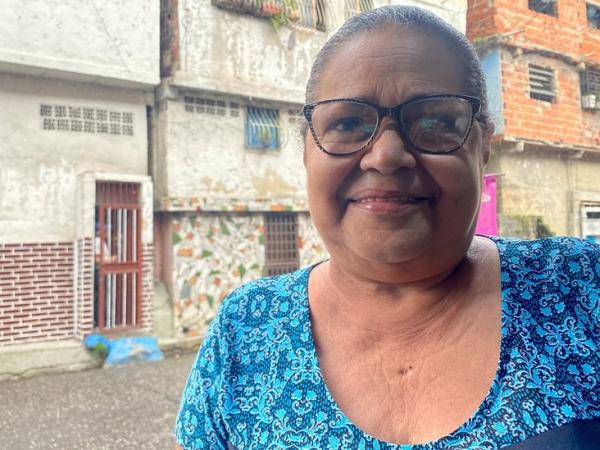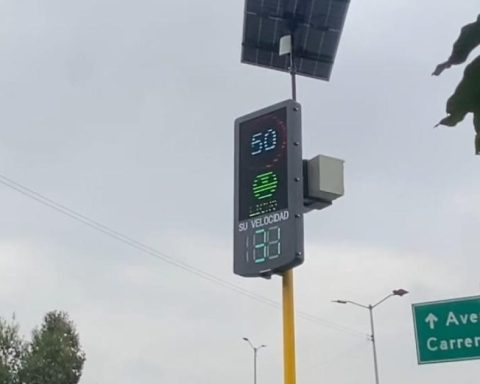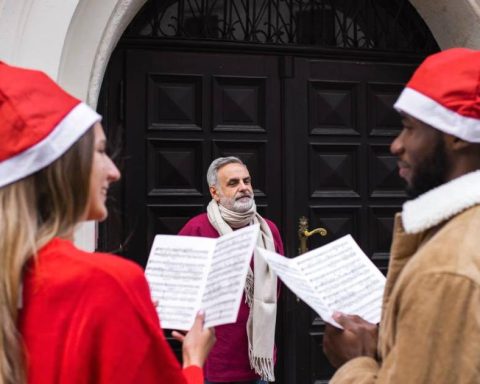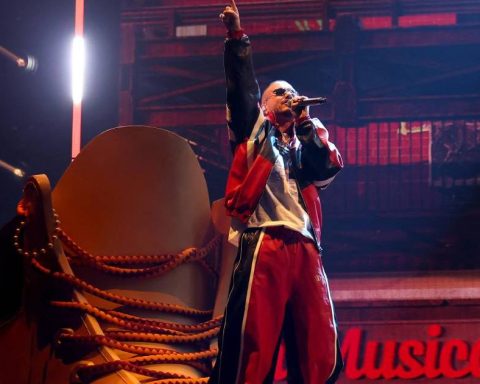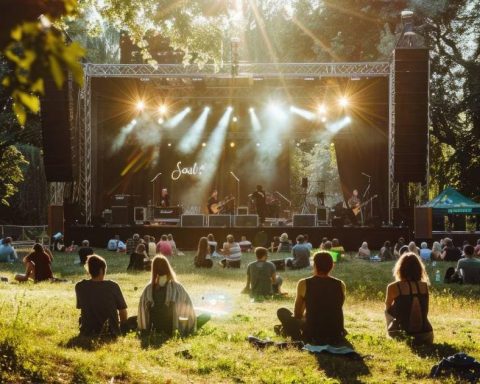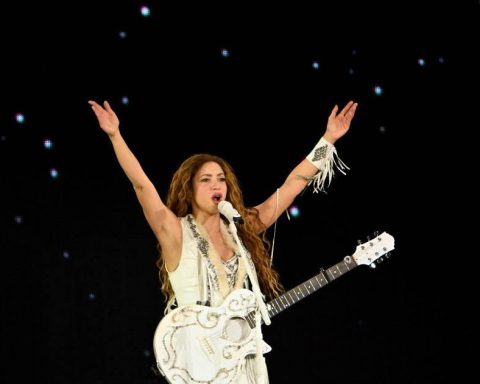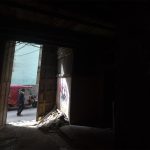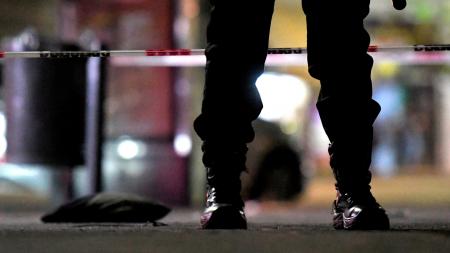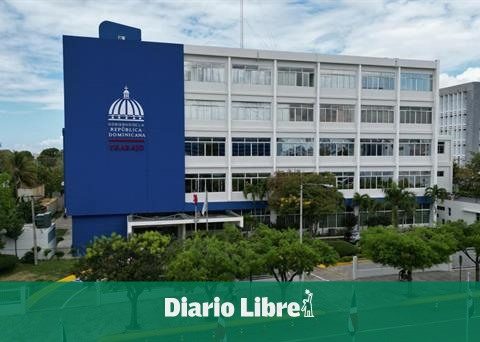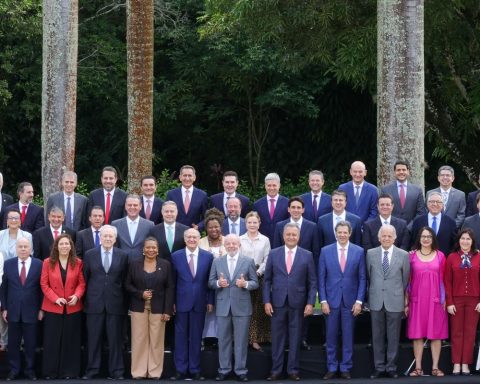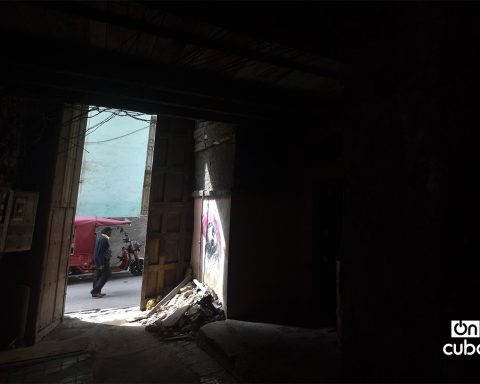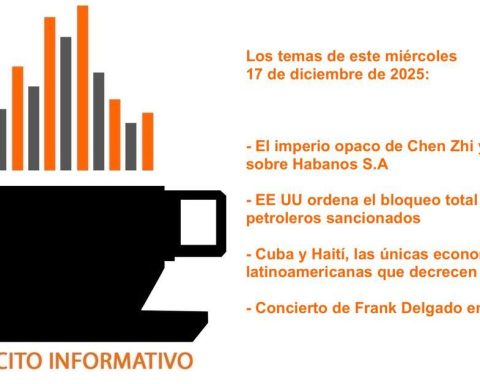It is not easy to get to Aray’s ice cream parlor.
You have to venture into Petare, one of the largest and most dangerous slums in Latin America, which stretches for kilometers across a series of hills in eastern Caracas with dozens of extremely narrow and sloping streets.
At the top, in the San Blas sector, after overcoming steep ascents that defy any vehicle, is the business of Aray Arias Torres, a 16-year-old teenager who happily welcomes us after an intense day at school.
Despite her young age, the petareña has become a source of inspiration for many of her neighbors.
Instead of organizing her quinceañera party in style, as is the tradition in several Latin American countries, she preferred to use the money that would be spent on the party to set up her own business on the ground floor of her house.
“I was about to turn 15 and I wasn’t sure if I wanted them to give me something or just give me the money to open a small ice cream parlor,” she told BBC Mundo.
“In the end I decided to help my mom and my family make more money,” adds the young woman who sells ice cream for between $2 and $8.
Like her, many in Petare have decided to undertake and seek opportunities to alleviate the economic and social crisis that has hit Venezuela since 2013.
Between that year and 2021, the economy of the South American country contracted by more than 75% and at least 7 million Venezuelans emigrated to other countries, the majority from Latin America.
But over the past year, after the economy bottomed out with the covid-19 pandemic, there has been an economic rebound fueled by rising oil production, the informal dollarization of the economy, and the abandonment of government control policy. changes and prices, among other factors.
The Economic Commission for Latin America (Cepal) estimates that the Venezuelan economy will grow 10% in 2022, but the Central Bank of Venezuela assures that the growth of the country’s Gross Domestic Product (GDP) could reach 18.70%.
Beyond the numbers, some in Petare, like Aray’s family, feel an improvement.
“The economy is more active and busy compared to how it was before the pandemic,” says his mother, Dayalín Torres.
The situation was so bad in 2018 that Dayalín had to emigrate to Panama because the money was not enough to cover his most basic expenses.
“The little I earned was barely enough to pay for school and transportation. It wasn’t enough for food.”
Dayalín, who returned to Venezuela in 2020, assures that now with a job you can buy more things.
But not all are better.
“Where has it improved? For whom?” replies María Cayone, 41, who has spent the afternoon sitting outside her house trying to sell wafers, coconut preserves and ice cream with her two youngest children.
“People here in Petare have turned to the informal economy, because a salary of US$20, for example, which is the maximum they pay, is not enough for anything,” he adds.
The minimum wage in the public sector of Venezuela, which is, individually, the largest employer in the country, is set at 130 bolivars a month (about US$6), an amount that has depreciated since March 2022, when it was equivalent to US$30.
Maria, who has six children, explains that she and her husband earn very little selling food at their doorstep, but “at least” they save the money they would spend on transportation if they had to work in another part of the city.
A ticket from the Petare metro station to San Blas, where she lives, costs about half a US dollar, so just leaving the neighborhood would cost her at least US$1, an amount that could double if the final destination is the center of Caracas, where the majority work.
“The US$20 a month that they would pay me would basically go to fares,” he calculates.
The Living Conditions Survey (ENCOVI), published in November 2022 by the Andrés Bello Catholic University, revealed that, although for the first time in seven years multidimensional poverty had been reduced in Venezuela, 58% of the population still lives in precariousness in 2022.
At the same time, inequality has risen, making Venezuela the “most unequal” nation in Latin America.
According to the survey, the difference in income between the poorest and the richest segment of the population is now 70 times.
It is not necessary to leave Petare to experience this inequality.
A couple of kilometers from María’s home, in the Carpintero neighborhood of Petare, Yeidis Morales opened a restaurant on the ground floor of his house in July 2022.
“At the beginning of the year, my husband bought blocks and cement and construction began,” explains the mother of four children, some of whom sometimes help out with the family business.
El Sazón de Margarita opens daily at 7:30am with empanadas and juices. At noon, the menu is transformed and offers lunch and dinner that include “sopa, seco y jugo” for US$5.
“We close at 10pm normally, but sometimes people come with their families and stay a bit longer and we have to stay open until midnight.”
The Wednesday that I visited him, the day was “lazy”, according to Yeidis. From noon to 2pm only two teenagers approached and turned around after asking for the price of lunch.
Yeidis says that sometimes he can sell up to 25 plates a day, but not always.
“There are days that I sell 15 lunches, others I sell 10, but sometimes it happens that I only sell one.”
Even so, he assures that his quality of life has increased in the last year.
“Crime has decreased. Before, in front of my house, there was a gang that was dedicated to stealing at night. It is no longer there,” he explains.
The Venezuelan Violence Observatory (OVV) recorded a total of 1,397 homicides in Venezuela between January and September 2022, giving a homicide rate of 116 per month.
Despite the fact that this figure continues to place Venezuela among the most violent countries in Latin America, the number is much lower than the 923 murders per month registered in 2021.
Experts attribute the drop in crime to the emigration of some gangs, the impoverishment of the country, which has reduced opportunities for crime, and “extrajudicial killings” carried out by law enforcement.
Yeidis has also seen economic improvement.
“After the pandemic, people began to create businesses and undertake much more. Nearby there is a girl who makes pizzas, another family that makes desserts, in short, people have begun to get ahead,” he adds.
The plan of this woman from Caracas and her family is to keep the business growing and open another restaurant in another area in the future.
Venezuelan economist Luis Vicente León, president of the consulting firm Datanálisis, assures that although the country’s economic recovery is palpable, the improvement has not been homogeneous.
“Neither all sectors nor all social strata nor regions have grown in an equivalent way,” he tells BBC Mundo.
“It is a disorderly growth that is concentrated, as usually happens, in the non-tradable sectors of the economy, that is, commerce, services, technology, distribution and health, but that obviously drags other sectors that are experiencing it worse,” he continues.
León points out that the Venezuelan economy still has a “very long way” to recover.
“Venezuela would have to grow 346% to recover the lost ground,” he says. “It takes 20 years of great economic growth for it to have the economy it had in 2013.”
The economist also warns that if the Venezuelan government does not solve the underlying problems of the economy, growth will slow down and stagnate.
“It cannot be denied that the economy is better and that it is growing, but it is growth from the ditch,” he insists.
“If you get out of the focus where improvements have been seen, you see a country that is still in ruins.”
Access to dollars is vital in today’s Venezuela, which is experiencing de facto dollarization.
In addition to entrepreneurs, those who receive remittances from relatives abroad or salaries in dollars, who are a minority, are better off than the rest.
Digsa Aponte is a neighbor of Yeidis and describes herself as a “utility”.
“I am a pastry chef, hairdresser, manicurist, seamstress, designer… I do the work that comes out of my home or the clients come to my house,” explains the woman, who does not benefit from the pension of 130 bolivars (US$6). reaches “for nothing”.
“Before this government, I had my own fashion design company and made clothes for large stores like Selemar. Now I have nothing,” she says sitting at a table in the El Sazón de Margarita restaurant.
She often goes to her friend Yeidis’ business, but rarely to eat. The US$5 that she costs for lunch is half her monthly allowance and now she has other priorities, like buying medicine for her mother, who suffers from diabetes and arterial hypertension.
Residents of Petare also complain that the quality of services is going “from bad to worse.”
Digsa assures that she frequently loses electricity, while Aray, from her ice cream shop, says that once she lost several liters of ice cream that thawed after a blackout that lasted more than 24 hours.
From his home, Miguel Ángel García, a 72-year-old resident of Digsa who lives on the main street of Carpintero, was a bus driver for four decades until his vehicle burned down in 2017.
Today he and his wife depend, like many Venezuelans, on their state pension (US$6 a month) and US$100 sent to them by their business administrator daughter who lives in Colombia.
He affirms that this money yields less and less due to the “incessant” increase in prices in Venezuela.
In Petare, some prices are similar to or even higher than European capitals with greater purchasing power such as Madrid or Lisbon.
While Yeidis sells his lunches for US$5, a kilo of chicken in a local store costs about US$4.5, a local cheese can cost US$5, while a liter of milk costs around US$2.3 and a can of tuna sells for $2 or $3, depending on the brand.
According to figures from the Venezuelan Finance Observatory (OVF), inflation in Venezuela was 305.7% last year, the highest in Latin America and the world.
“Venezuela is over and it will take many years for it to improve,” Miguel Ángel García says sadly from his humble home in the largest and perhaps the best-known neighborhood in Caracas, described by some as “a city within a city,” with their own restaurants. hairdressers, bars, markets and an economy that moves by itself.
Others, like Aray, are more optimistic. She hopes that her ice cream parlor will prosper to fulfill her dream of opening a cafe and, later, a business for her mother, who currently “works too much.”
*Venezuelan journalist Vanesa Silva contributed to this report.
Remember that you can receive notifications from BBC News World. Download the latest version of our app and activate them so you don’t miss out on our best content.
